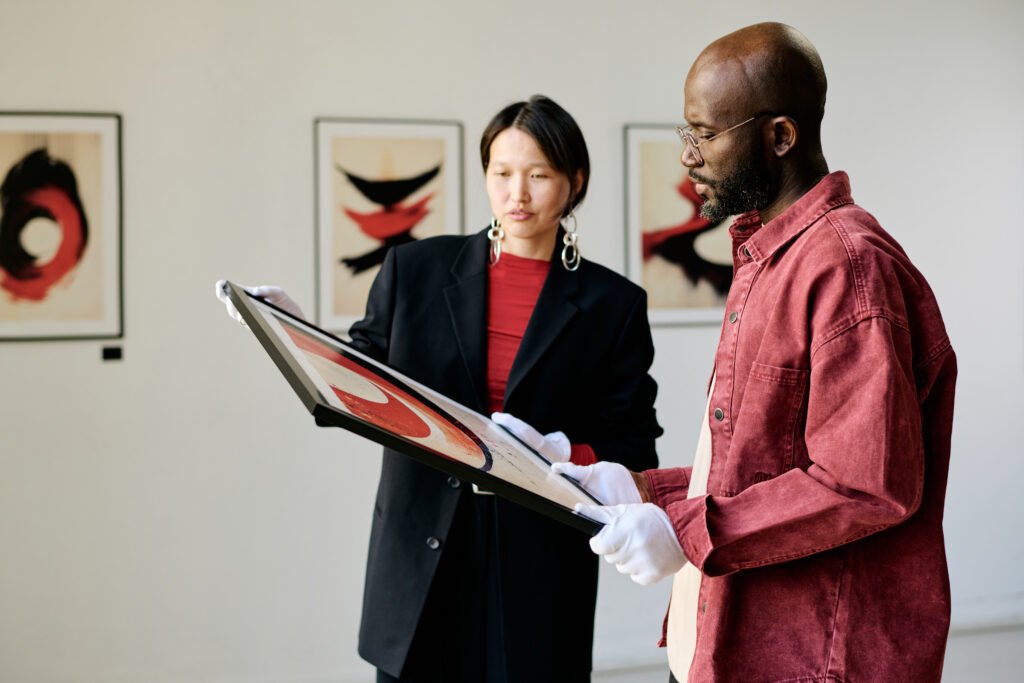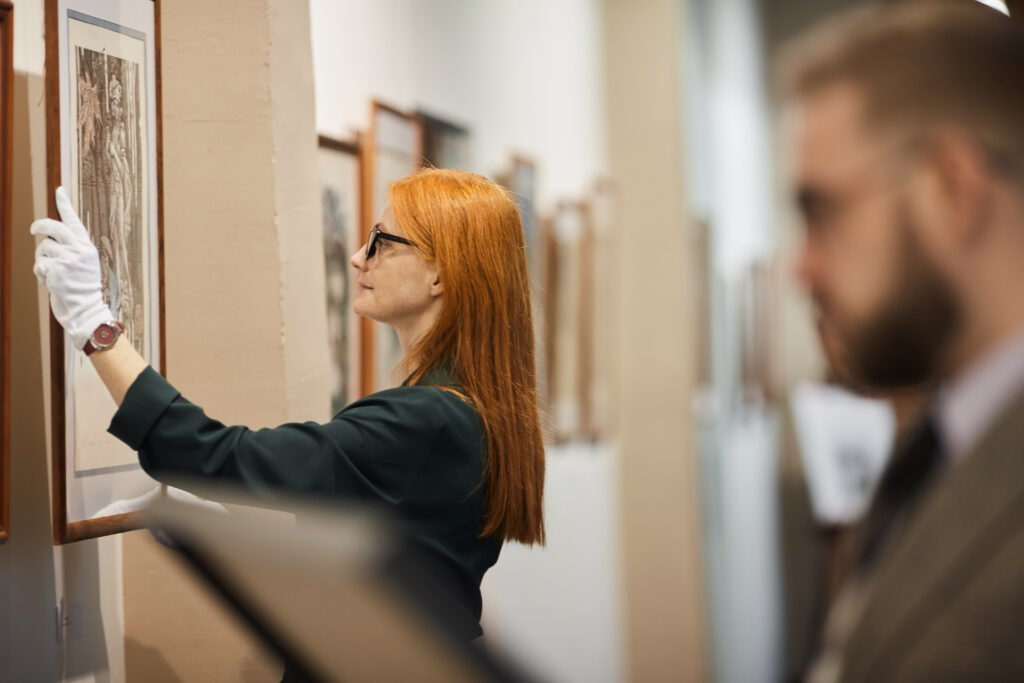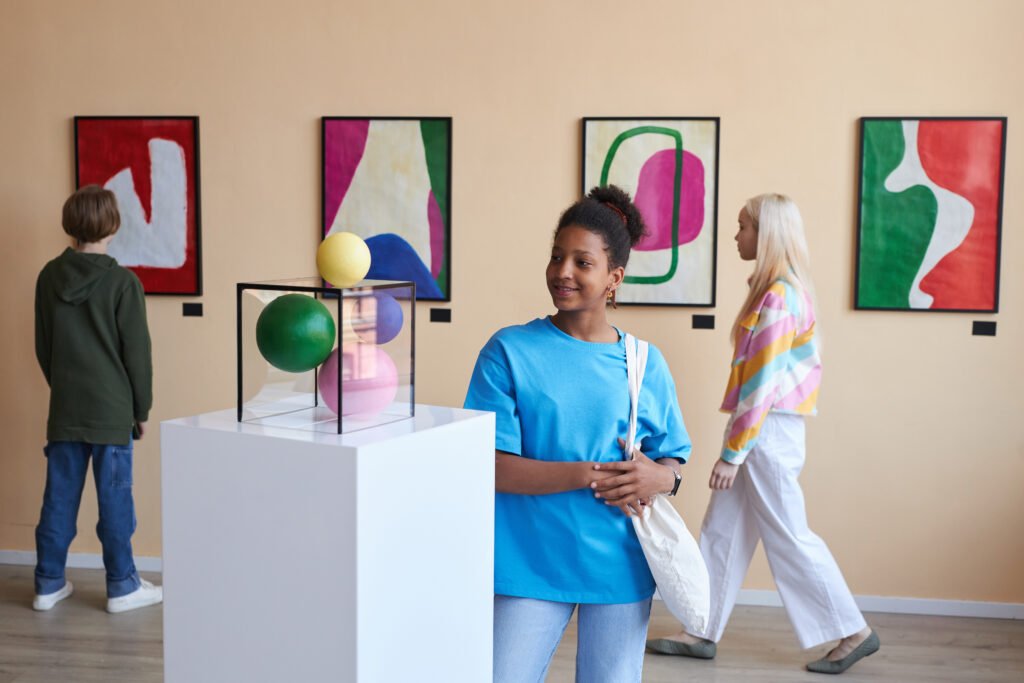The art market is one of the most dynamic and complex sectors of the global cultural economy. It moves billions of dollars every year, shaped by economic, political, and cultural forces. Among its many styles, abstract art stands out as one of the most valued and versatile artistic expressions.
With digitalization and the growth of online platforms, buying art has become easier than ever, including works by emerging artists from various countries. Still, in the midst of so many opportunities, it is essential to understand the challenges and rules that govern this expanding market.
The Global Overview: Who Leads and How to Buy Art Today
According to The Art Market 2024 report, produced by Art Basel in collaboration with UBS, the global art market generated $67.8 billion in 2023. The United States leads the sector with 42% of global transactions, followed by the United Kingdom and China. However, countries like Brazil, Mexico, South Korea, and South Africa are gaining ground, especially in the digital art trade.
The convenience of buying art online has transformed the sector’s dynamics. Platforms such as Artsy, Saatchi Art, and Etsy have opened the doors for collectors and interior designers to acquire artworks with just a few clicks. This has particularly favored the sale of abstract art, thanks to its broad aesthetic appeal and seamless integration into interior design projects.
According to the study Global Trends in Art Investment, conducted by the University of Oxford and the Art Institute of Chicago, Google searches for terms like “buy art online” and “abstract art for decoration” have increased significantly in the past two years.
Another important factor is the growing appreciation of art as an investment. Works belonging to recognized movements, such as Abstract Expressionism, often rise in value at auctions. At the same time, there is room for new talents, especially those who demonstrate authenticity and have a strong digital presence.
Structural Challenges and the Lack of Transparency
Despite growth, the art market continues to face long-standing issues that hinder its full development. The absence of standardized international regulation makes it difficult to track artworks and creates fertile ground for fraud and forgery. According to the Art Basel report, between 2019 and 2023, around 15% of investigated artworks showed signs of forgery or irregular transactions.

In addition, there is a high concentration of major galleries and art fairs in urban centers such as New York, London, and Paris. This limits access to the market for both artists and buyers in peripheral regions and developing countries. In many cases, the art world remains accessible primarily to a financial and cultural elite.
Researcher Claire McAndrew, author of Fine Art and High Finance (2010), points out that a major obstacle is the lack of transparency in negotiations. Prices are often not disclosed publicly, making it difficult to assess value and discouraging new collectors. She advocates for more transparency and regulation through reliable systems of authenticity certification.
The Future of the Art Market and the Rise of Abstract Art
Abstract art continues to hold a central place in contemporary taste, thanks to both its decorative potential and its conceptual strength. Museums such as MoMA in New York and the Centre Pompidou in Paris have curated exhibitions that refresh the narrative of abstraction in the 21st century. This institutional recognition helps drive the market for abstract art sales.
The new generation of collectors seeks works that combine originality, visual impact, and cultural investment. Abstract art, by avoiding figurative representation, allows for multiple interpretations and subjective connections. This makes it highly adaptable to various settings, including homes, offices, and commercial environments.
Recent research such as the report The Psychology of Collecting Art, published by the Stanford Graduate School of Business, reveals that over 60% of surveyed buyers choose abstract works for their emotional impact and ability to transform spaces. This reinforces the role of abstract art in decoration as well as its importance in the broader art market.
The trend points to an increasingly hybrid market, blending in-person fairs with digital platforms, physical galleries with virtual spaces, and traditional artists with digital creators. In this evolving scenario, those who understand the opportunities and challenges ahead can act with more confidence, critical sense, and aesthetic vision.



